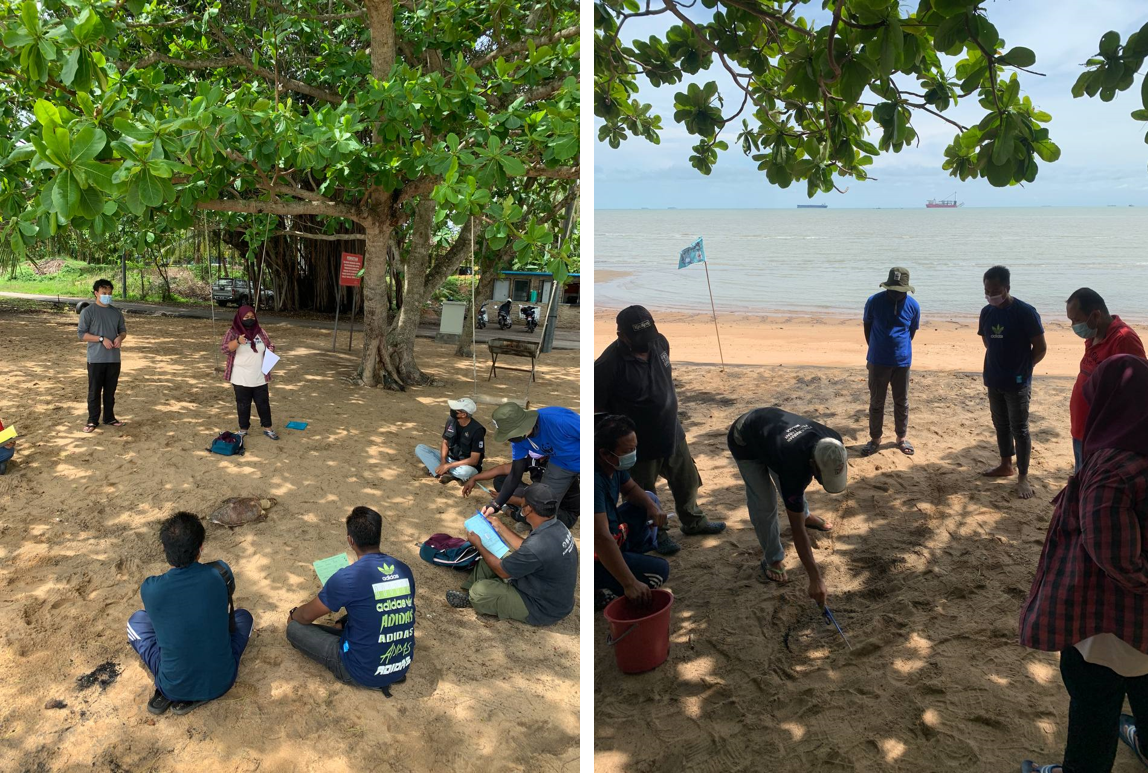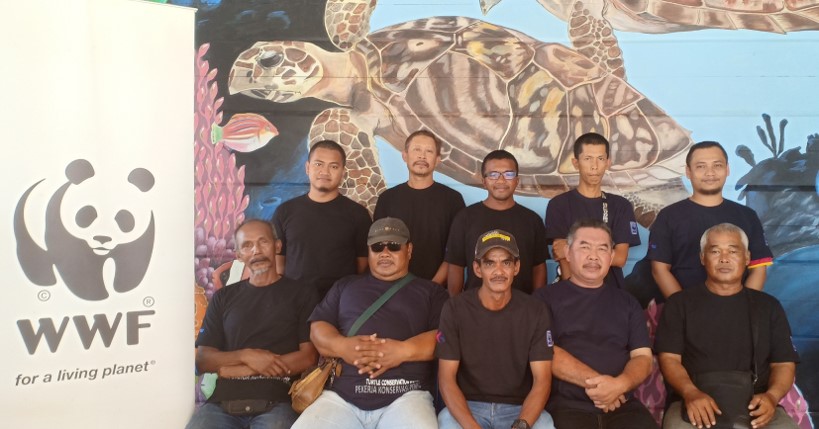We train community members to become citizen scientists. By working with us, they gain a lot of knowledge. Not only about why it is important to protect sea turtles and how to protect their eggs, but also how to collect and understand species data. They gain a deeper understanding of their natural environment.
Perhaps even more important is the social impact of the sea turtle guardians. The communities of Malacca have been selling turtle eggs for many generations. It’s not easy to change behaviour that has been part of a culture for such a long time. Because the turtle guardians are part of the community, it’s easier for them to talk with the people and explain why it’s important to protect the eggs.
Poachers, who have searched for turtle nests to make a living, are particularly skilled in finding them. Many of them were poachers for years. By convincing them to work with us, they put their valuable skills to good use instead of contributing to the decline of the species. At the same time they earn money. It’s a win-win situation.
We explain to them that if they keep taking eggs, there won’t be any turtles any more in 20 years. And that if you take care of them instead, it will have a long-term effect benefitting the entire region. Once the poacher decides to work with us, there is still a lot of work to do. We need to train and guide them to make sure it all goes well. But it’s worth it.


